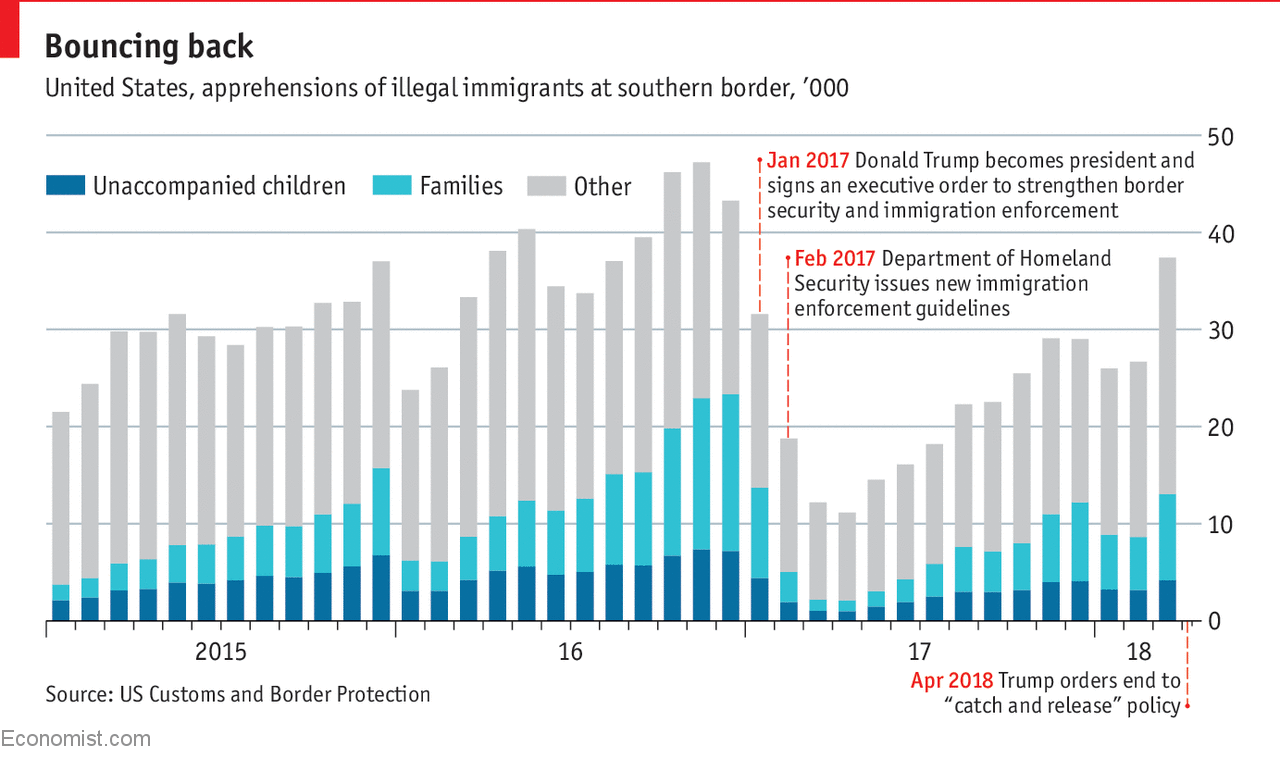
IT CERTAINLY looked like a “Trump effect.” Within weeks of Donald Trump’s arrival at the White House in January 2017, the number of people caught crossing America’s southern border illegally fell to a 17-year low of 11,127. John Kelly, then secretary of the Department of Homeland Security (DHS), attributed the drop to Mr Trump’s executive orders on immigration. Elaine Duke, the department’s deputy secretary, gave credit to better enforcement of immigration laws. Mr Trump hailed it as “a historic and unprecedented achievement”.
If such an effect did exist, it appears to have been short-lived. On April 5th, the DHS announced that Border Patrol agents apprehended 37,393 people in March, an increase of more than 200% on the previous year. The number of unaccompanied children caught entering illegally jumped by 300%, and the number of families detained while attempting the journey surged by nearly 700%.
Permanently reducing such flows will require more than Mr Trump’s tough talk. The president’s vow to end what he calls “catch and release”—the practice of apprehending undocumented immigrants, and then releasing them while their court cases are being resolved—will be particularly difficult to implement. The DHS currently has the capacity to detain a maximum of 39,000 immigrants facing deportation; Mr Trump wants that figure raised to 48,000. Under a decades-old federal court ruling, immigration authorities can detain unaccompanied children for only 20 days before releasing them to family members or other sponsors living in the country. By law asylum-seekers with a “credible fear” of returning home must be released if they do not present a security risk.
Latest stories
Despite these constraints, Mr Trump appears determined to proceed with his immigration crackdown. On April 4th he announced plans to deploy 2,000 to 4,000 National Guard troops to the Mexican border to support federal law enforcement. He has continued to tout his achievements. “We’re toughening up at the border” he told a crowd in West Virginia on April 5th. “We’re throwing them out by the hundreds.” Mr Trump may be disappointed to learn that the DHS deported 226,000 individuals in 2017, 14,000 fewer than the previous year.